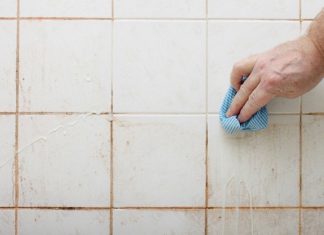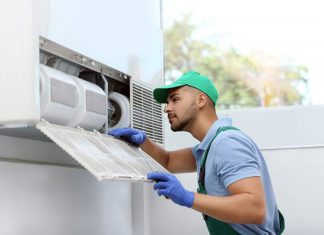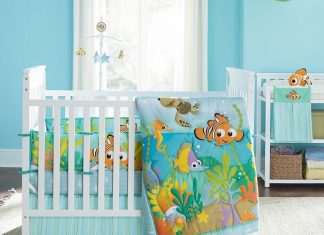First impressions are essential in business. A clean and well-kept atmosphere not only promotes professionalism but also assures the health and safety of both staff and consumers. When it comes to keeping a clean workplace, commercial carpet cleaning equipment is essential. Aside from aesthetics, these instruments are critical for extending carpet life, increasing indoor air quality, and ultimately contributing to a good and healthy work environment.
Types Of Commercial Carpet Cleaning Equipment
Various commercial carpet cleaning equipment types are available to meet multiple cleaning demands and preferences. Each piece of equipment has advantages and intends to handle specific problems. Let’s look at the different sorts of commercial carpet cleaning equipment:
Carpet Extractors
These adaptable machines are referred to as steam cleaners. They inject a cleaning solution and water mixture deep into the carpet fibers and then remove the unclean solution. There are two types of carpet extractors: portable and truck-mounted. Mobile units are suitable for smaller locations because they are more maneuverable. In contrast, truck-mounted systems are better suited for big commercial venues due to their more extensive power and water capacity.
Encapsulation Machines
This process entails using a specialized cleaning solution that, when it dries, traps dirt and debris into crystalline particles. Once they are dry, you can quickly sweep away these particles. Encapsulation cleaning is well-known for its short drying time and ability to minimize re-soiling.
Bonnet Cleaners
People often employ this technique for regular maintenance. A bonnet cleaner agitates the carpet’s surface and removes dirt using a revolving pad dipped in a cleaning solution. Bonnet washing, while less deep-cleaning than other procedures, is excellent for surface-level care.
Dry Carpet Cleaning Machines
These machines use a low-moisture cleaning technique, making them ideal for areas that require speedy drying. Dry cleaning agents or powders are sprayed onto the carpet, attracting and absorbing dirt. Then, the vacuum removes the cleaning solution and the trapped dirt from the rug.
Benefits Of Utilizing Commercial Carpet Cleaning Equipment
Commercial carpet cleaning equipment provides numerous advantages beyond simply preserving a clean appearance. The following are some of the primary benefits of employing such technology in commercial settings:
Enhanced Appearance
Using industrial carpet cleaning equipment regularly keeps carpets appearing clean, fresh, and well-maintained. It creates a favorable initial impression for visitors and clients, contributing positively to the overall image of your company.
Improved Indoor Air Quality
Carpets can trap allergies, dust, and pollutants, all of which have an impact on indoor air quality. Deep cleaning using specialist equipment eliminates these toxins, resulting in a healthier atmosphere for staff and customers, especially those with respiratory sensitivity.
Prolonged Carpet Lifespan
Regular care with appropriate carpet cleaning equipment keeps dirt and debris from prematurely wearing down carpet fibers. It increases the carpet’s longevity, decreasing the need for frequent replacements and saving money in the long term.
Efficient Stain Removal
Commercial carpet cleaning equipment has robust cleaning solutions and extraction capabilities that remove tough stains and spills. Addressing stains as soon as possible prevents them from settling in and becoming permanent.
Time and Labor Savings
Commercial carpet cleaning technology, when compared to traditional hand cleaning methods, significantly saves the time and work necessary to clean huge areas. Employees can then focus on more productive duties, improving overall operational efficiency.
Environmental Benefits
Manufacturers have incorporated environmentally friendly features into new carpet cleaning equipment, including reduced water and cleaning ingredients. It not only saves resources but also aligns with the sustainability aims of corporations.
Choosing The Right Equipment
Selecting the appropriate commercial carpet cleaning equipment is a significant choice that can influence the efficiency of your cleaning endeavors and the overall aesthetic of your business environment:
Carpet Type and Size
Different carpets necessitate different cleaning methods. Furthermore, the size of the carpeted area influences whether portable or truck-mounted equipment is more appropriate.
Cleaning Frequency
Cleaning in high-traffic areas may necessitate more regular visits. In such instances, equipment with fast drying periods can minimize disturbance to business operations.
Budget and Investment
Consider the equipment’s initial cost and the long-term benefits from decreased maintenance and prolonged carpet lifespan.
Eco-Friendly Features
Choosing equipment that uses environmentally friendly cleaning solutions and water-saving technology might be a good choice for firms with a solid commitment to sustainability.
How Often Should Commercial Carpets Be Cleaned?
Several criteria determine the frequency at which you should clean commercial carpets. These criteria include the level of foot traffic, the nature of the business or facility, the type of carpet, and the desired overall cleanliness standards. Below are some general recommendations for the appropriate cleaning frequency of commercial carpets:
High-Traffic Areas
It would help if you cleaned the entrances, hallways, and reception areas with high foot traffic. These areas may need to be cleaned every 1 to 3 months to prevent dirt and stains from developing.
Medium-Traffic Areas
Spaces with moderate foot activity, such as offices and conference rooms, can be cleaned every 3 to 6 months. Cleaning helps to keep a clean appearance and avoids deep-seated filth buildup.
Low-Traffic Areas
For example, you can clean storage rooms and less frequently used corridors every 6 to 12 months. Less frequent cleaning is okay here, but regular maintenance is still required.
Healthcare and Food Service Facilities
Because of hygiene and sanitation concerns, hospitals, clinics, and restaurants may require more frequent cleaning. Depending on the exact requirements, these areas may need cleaning every 1 to 2 months.
Seasonal Considerations
Carpets may require more regular cleaning at particular periods of the year, depending on the environment and weather conditions. Rugs, for example, may become dirtier faster and require more frequent cleaning during wet or snowy seasons.
Special Events or Spills
If there are any special events or spills, you must address them immediately to avoid stains and severe carpet damage.
Conclusion
Maintaining a clean and appealing workstation is critical for success in today’s corporate market. Commercial carpet cleaning equipment is essential to attaining this goal, providing benefits beyond aesthetics. The appropriate equipment choice can significantly impact a business’s image and reputation, from improving indoor air quality to extending carpet lifespan and increasing operating efficiency. Companies may make informed decisions that contribute to a healthier, more professional, and welcoming atmosphere for everyone by understanding the types of equipment available, their benefits, and the variables to consider when selecting them.















